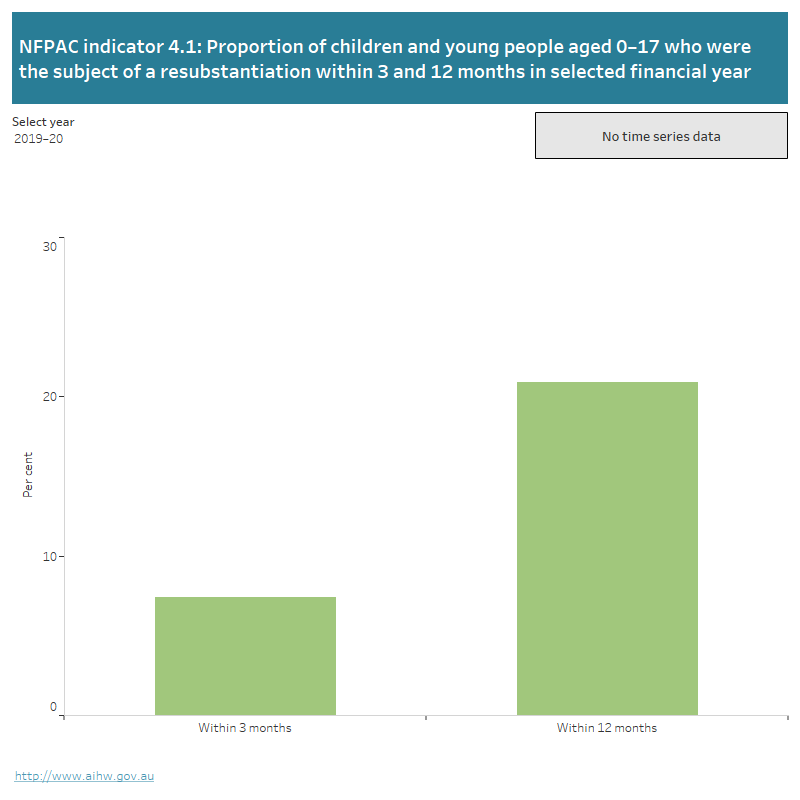4.1 Child protection resubstantiations
Resubstantiation rates are a broad indicator of the recurrence of abuse, neglect or harm to children.
Resubstantiation data capture children who were the subject of a substantiation in a financial year, and who were then subsequently the subject of a further substantiation within the following 3 or 12 months. The year reported relates to the year of the original substantiation.
Cases of resubstantiation do not necessarily imply that child protection agencies have failed to protect children from repeated abuse. The resubstantiation rate is affected by the finalisation of investigations and also by factors beyond the control of the child protection system, such as changes in family situations (for example, illness, pregnancy or unemployment), which may place children in danger of being re-abused or neglected.
Trend data: For all indicator displays, the yearly trend is limited to indicators with 3 or more years (including the current year) of comparable time series data. To see the trend click on “Yearly Trend” button on the display. Where 3 or more years of comparable data including the most recent year is not available, a “No time series data” message is shown on the display.
The figure shows the proportion of children and young people aged 0–17 who were the subject of a child protection resubstantiation within 3 and 12 months. Data can be selected by year from 2008–09 to 2019–20. In 2019–20 the proportions were 7.4% within 3 months and 20.9% within 12 months.

Source: AIHW Child Protection Collection
See the supplementary data tables for further information and footnotes about these data.
Indicator technical specifications
The information below provides technical specifications for the summary indicator data presented in the quick reference guide.
| Definition | Data source | |
|---|---|---|
| Numerator | Number of children aged 0-17 years who were the subject of a substantiation in the reference year, and who were the subject of a resubstantiation within 90 days or 365 days | AIHW National Child Protection Data Collection |
| Denominator | Number of children aged 0-17 years who were the subject of a substantiation in the reference year | AIHW National Child Protection Data Collection |
Explanatory notes
Children who were the subject of a resubstantiation are those who were the subject of a substantiation during the reference period, regardless of the date of notification, who were also the subject of at least one subsequent notification within the periods specified (90 days and 365 days) that is subsequently substantiated.
Due to the periods specified (90 days and 365 days), two years of data are required to identify resubstantiations, and the reference year refers to the year of the original substantiation. As such, the most recent available data for this indicator will be a year behind other measures of substantiations.
Resubstantiation data should be interpreted with caution, as cases of resubstantiation do not necessarily imply that child protection agencies have failed to protect children from repeated abuse. The resubstantiation rate is affected by the finalisation of investigations, and also by factors beyond the control of the child protection system, such as changes in family situations (for example, illness, pregnancy or unemployment), which may place children in danger of being re-abused or neglected.
A resubstantiation does not necessarily refer to the same source or risk as the original substantiation.
The data reported to the AIHW on child protection substantiations reflects departmental activity. Administrative data captures incidence of substantiations of harm, or risk of harm, rather than prevalence of abuse and neglect.


